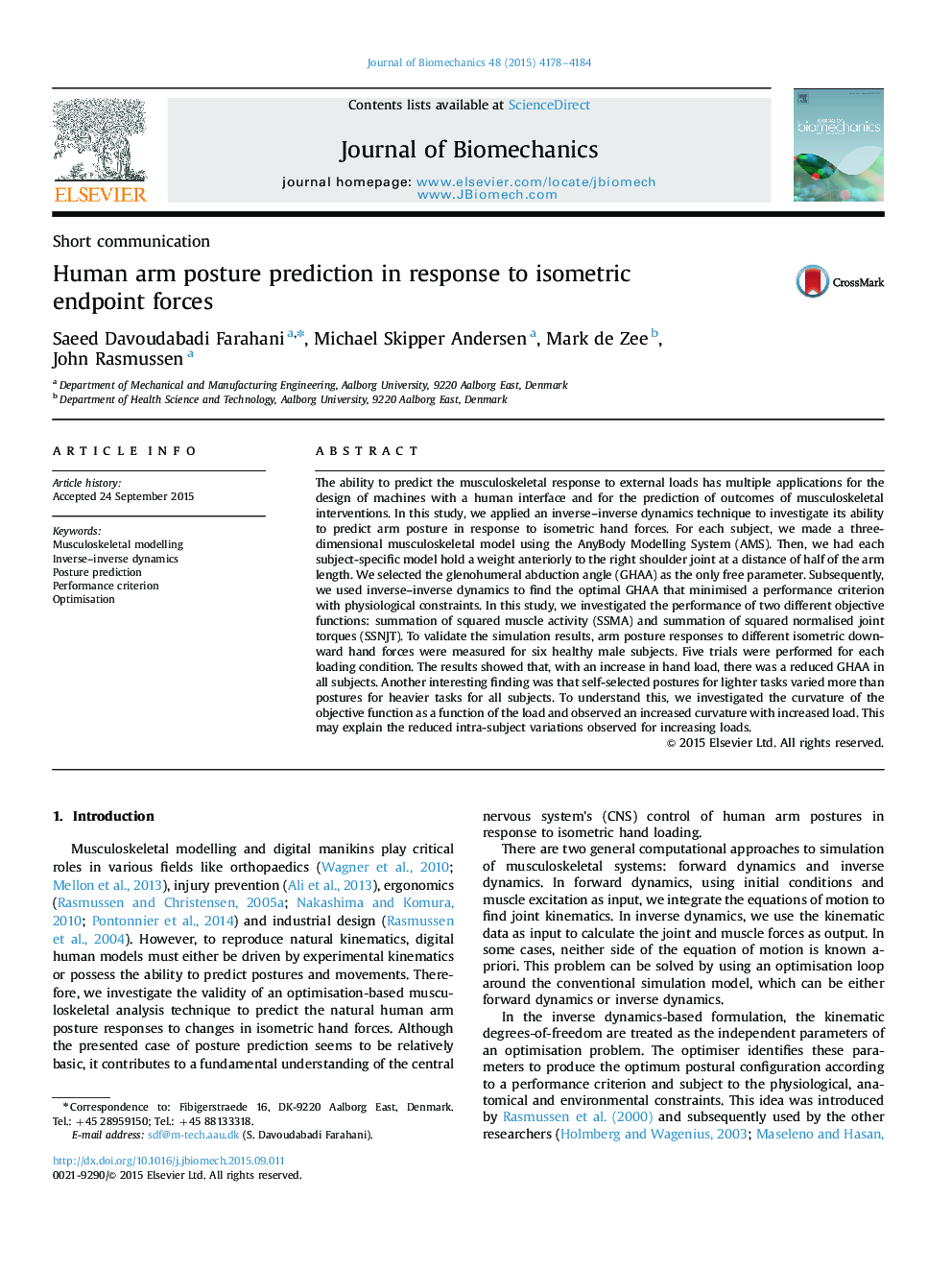| کد مقاله | کد نشریه | سال انتشار | مقاله انگلیسی | نسخه تمام متن |
|---|---|---|---|---|
| 10431257 | 910210 | 2015 | 7 صفحه PDF | دانلود رایگان |
عنوان انگلیسی مقاله ISI
Human arm posture prediction in response to isometric endpoint forces
ترجمه فارسی عنوان
پیش بینی موقعیت بازوی انسان در پاسخ به نیروهای پایه ایزومتریک
دانلود مقاله + سفارش ترجمه
دانلود مقاله ISI انگلیسی
رایگان برای ایرانیان
کلمات کلیدی
مدلسازی اسکلتی عضلانی معکوس دینامیکی معکوس، پیش بینی وضعیت، معیار عملکرد، بهینه سازی،
موضوعات مرتبط
مهندسی و علوم پایه
سایر رشته های مهندسی
مهندسی پزشکی
چکیده انگلیسی
The ability to predict the musculoskeletal response to external loads has multiple applications for the design of machines with a human interface and for the prediction of outcomes of musculoskeletal interventions. In this study, we applied an inverse-inverse dynamics technique to investigate its ability to predict arm posture in response to isometric hand forces. For each subject, we made a three-dimensional musculoskeletal model using the AnyBody Modelling System (AMS). Then, we had each subject-specific model hold a weight anteriorly to the right shoulder joint at a distance of half of the arm length. We selected the glenohumeral abduction angle (GHAA) as the only free parameter. Subsequently, we used inverse-inverse dynamics to find the optimal GHAA that minimised a performance criterion with physiological constraints. In this study, we investigated the performance of two different objective functions: summation of squared muscle activity (SSMA) and summation of squared normalised joint torques (SSNJT). To validate the simulation results, arm posture responses to different isometric downward hand forces were measured for six healthy male subjects. Five trials were performed for each loading condition. The results showed that, with an increase in hand load, there was a reduced GHAA in all subjects. Another interesting finding was that self-selected postures for lighter tasks varied more than postures for heavier tasks for all subjects. To understand this, we investigated the curvature of the objective function as a function of the load and observed an increased curvature with increased load. This may explain the reduced intra-subject variations observed for increasing loads.
ناشر
Database: Elsevier - ScienceDirect (ساینس دایرکت)
Journal: Journal of Biomechanics - Volume 48, Issue 15, 26 November 2015, Pages 4178-4184
Journal: Journal of Biomechanics - Volume 48, Issue 15, 26 November 2015, Pages 4178-4184
نویسندگان
Saeed Davoudabadi Farahani, Michael Skipper Andersen, Mark de Zee, John Rasmussen,
